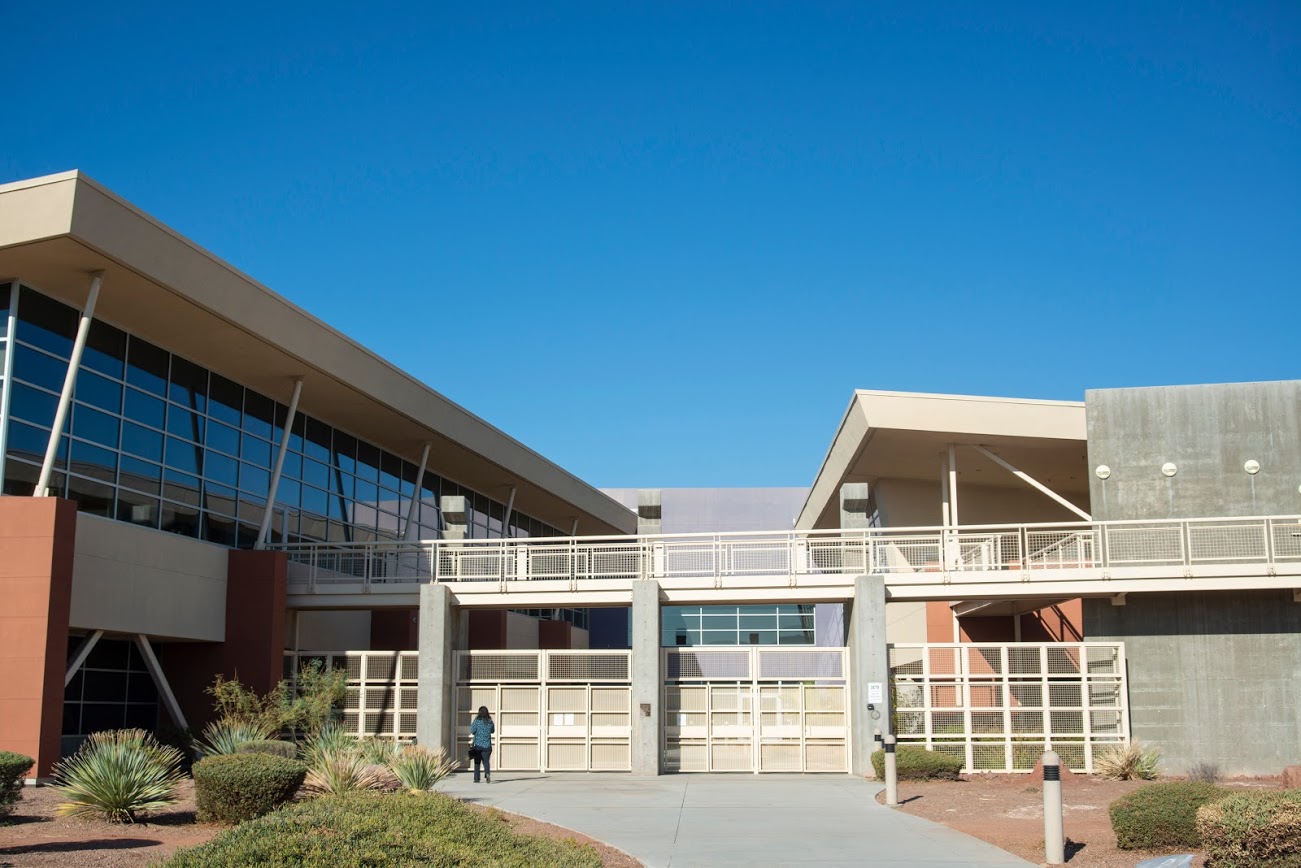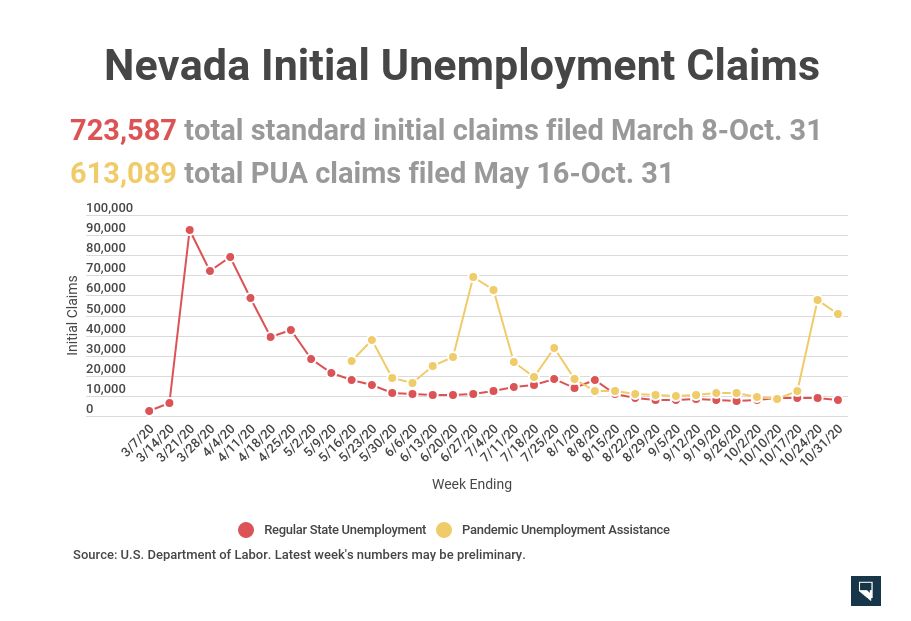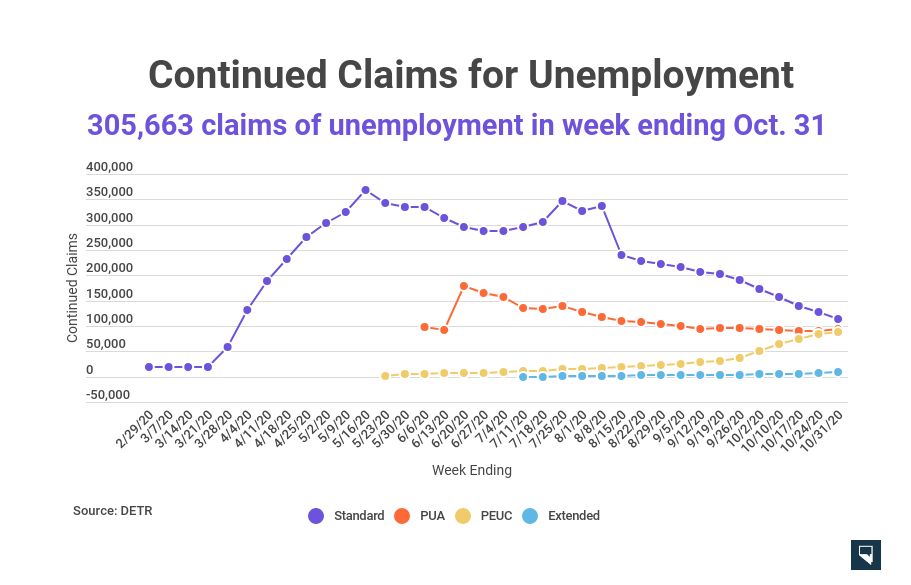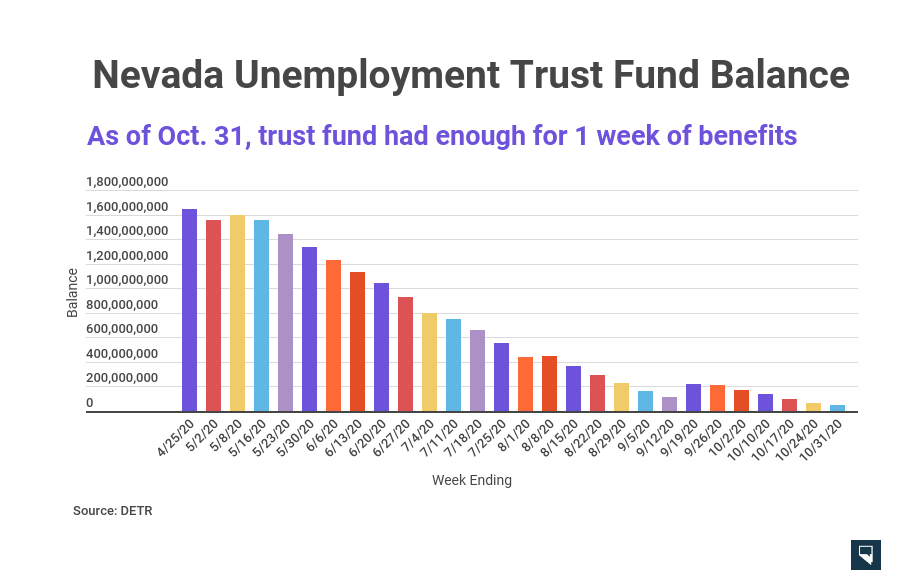As unemployment rolls remain swollen, some fear plight of jobless has fallen to wayside

Las Vegas resident Diana Santeliz was able to make a living driving for Uber and Lyft — until the pandemic hit, work dried up in April and her car was repossessed in June.
She only received three weeks of benefits through the Pandemic Unemployment Assistance (PUA) program before payments were put on hold for potential eligibility in regular unemployment — possibly because of $6,000 she made months ago while helping a friend start a restaurant. She has recently been able to hit the road again in a car she rents, but it costs her $360 a week, which often exceeds the wages she makes shuttling people around town.
“I was backwards at the end of the day,” she said. “I've left my kids for six hours. And I'm like making 50 bucks a day.”
Santeliz, 47, is one of the Nevadans still caught in an unemployment backlog with few answers on when things will get better. More than 300,000 claims were filed by people saying they were out of work last week, according to the Nevada Department of Employment, Training and Rehabilitation, although it’s not clear how many of those are being paid.
The number of people reporting they’re out of work fell by less than 2,000 over the week. Meanwhile, DETR is fielding an avalanche of new PUA claims that it says are “highly suspect” — more than 50,000 came in last week, about five times what had become the new normal.
The agency has retrained cross-trained welfare workers to try to address the backlog, but resolutions haven’t been instantaneous.
Santeliz is making it through with visits to food banks and death benefits that her children — ages 9 and 15 — receive after the passing of their father. She’s also borrowing from a patchwork of friends to make her rent after she was served a seven-day eviction notice. But then the act of staying current on her rent is also what prevents her from being eligible for a rental assistance program.
“I’d rather pay that rent and eat scraps,” she said. “I'd rather have a roof over their head.”
Others fear the issue facing Nevada’s unemployed has fallen off the radar. Laurie, a Reno nurse who didn’t want her last name used for fear of reprisal, had been receiving payments for the months of April and May until they stopped, and her claim has been “pending resolution” ever since.
“I don't know if it's sitting there because they're refusing to pay and that I need to appeal this or say something, or if it's just because they haven't done anything,” she said. “It's just the fact of no contact. I have no idea what they're doing.”
Her husband works, and she’ll soon be starting a new job, but the financial setback has been enough that they have had to ask their mortgage company to defer payments. After about four months of frequently calling DETR and not getting through to the office, she’s given up on reaching them by phone.
“I know people are in way worse situations than me,” she said. “I know [the governor] can't fix it single-handedly, but he could at least address it and be in on it a little bit and support people.”
Here are the latest statistics about the situation:
Initial claims in the regular unemployment program have remained relatively flat for more than two months and totaled 8,158 in the week ending Oct. 31. Meanwhile, initial claims in the PUA program continued a spike seen the week earlier: there were 50,698 claims last week, or about five times the level of claims that had been coming in for several weeks prior.
“Given the underlying economic conditions, DETR is requiring additional verification of these highly suspect claims,” the agency said.
There have now been more than 1.3 million initial claims for unemployment in Nevada since the pandemic began, while there are about 1.5 million people in the labor force. Among those initial claims could be fraudulent claims or ones filed by a single person in more than one program.

Continued claims across all four programs totaled 305,663 last week. That’s a drop-off of less than 1,700 claims, indicating a slow pace of recovery for the job market.
In the regular program, they’ve dropped to 114,102 as people continue exhausting that base program. Meanwhile, claims in the Pandemic Emergency Unemployment Compensation program for extended benefits jumped to a new high of 88,077 last week.
PUA continued claims increased to 94,950 last week, which marks an uptick from a week earlier.

The state’s unemployment trust fund balance is about $51 million, or enough to pay a little more than a week of state benefits at the current pace. Nevada will likely soon begin borrowing from the federal government to meet its unemployment obligations, just as 20 other states are doing.
DETR administered $148 million in benefits last week including state and federally funded programs. Among that was $62 million in Lost Wages Assistance — a federal program that provides a $300-per-week bonus for a few weeks.
Nevada’s unemployment rate, at 12.6 percent in September, is second-worst in the country, behind only Hawaii’s 15.1 percent.

